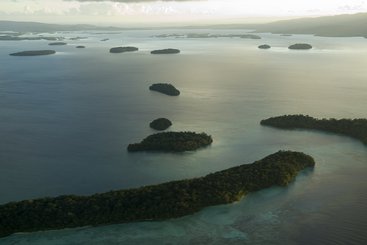Solar radiation modification (SRM) – also discussed in the context of geoengineering – is part of a set of climate mitigation technologies that may be used to protect the earth from the advanced stages of global warming (IPCC 2021). Small Island Developing States (SIDS) are particularly vulnerable to climate change and need to be included in decisions about the deployment of these technologies, or could end up being disproportionately impacted by unintended consequences.
In March 2021 the US National Academy of Sciences recommended that US should establish a research programme to assess the technology’s feasibility and billions of dollars have been designated for this research. The ‘Americas Conference on Solar Radiation Modification: Science Governance and Implications for the Region’ – held in Jamaica earlier this year, and hosted by the Inter-American Institute for Global Change Research (IAI), the Degrees Initiative and C2G Carnegie Climate Governance Initiative – brought together experts from Latin America, the Caribbean, and the US to discuss the issues around SRM.
SRM does not solve the greenhouse gas emissions problem. It could, however, mask and temporarily reduce its dire effects on the planet. SRM modifies the amount of radiation coming to the earth from the sun through techniques like stratospheric aerosol injection (the injection of reflective aerosol particles into the stratosphere to reflect sunlight away from the earth) and marine cloud brightening (spraying salt or other chemicals or other particles into marine clouds to make them more reflective).
Scientists don’t yet fully understand how SRM will affect climate change impacts in different states and regions. But impacts will be unequal, with winners and losers. There will be changes in regional rain and wind patterns in some regions – including changes in sunlight that may impact biodiversity, agriculture and crop yields, in ways as yet poorly understood.
The Harvard Solar Geoengineering Research Program planned to carry out a field test over Sweden in 2021 but met significant local resistance and was eventually suspended.
Also, the science is unclear as to how to control the rates and magnitude of the reduction of global warming through SRM. A further concern is that a sudden halt in the use of this technology by a major SRM player could take the planet into thermal shock.
SRM offers a very attractive, albeit partial and temporary, solution to global warming and climate change, as it would potentially require less radical behavioural change and economic adjustment than other solutions. But its deployment is likely to repeat the patterns of exclusion in global decision-making that created the climate crisis in the first place, and that ignore the special situation of SIDS including highly fragile ecosystems and exposure to extreme weather.
Key questions for SIDS and other nations about SRM include:
- Thus far, the international community has been unable to govern climate change to ensure compliance with internationally agreed goals. Would a focus on SRM further curtail global ambition towards carbon neutrality?
- Would funding for SRM research be better spent to ensure greater use of safe, reliable and existing climate mitigation technologies such as renewable energies and energy efficiency measures?
- How to stop a rogue state or powerful individual from taking unilateral action for the deployment (or termination once begun) of these technologies?
- What are the ethical considerations around locking in future generations into a potential dependence on SRM technologies?
- How can the global governance of SRM allow for transparent, legitimate and fully participatory governance – since all peoples will be affected by its deployment?
- Will powerful or wealthy states have an effective veto over the nature of research and deployment of SRM?
- Which regions will suffer losses from SRM and what mechanisms can guarantee compensation, particularly given current low levels of development and adaptation finance available to SIDS?
- How to ensure that human rights are protected and promoted in SRM research, deployment and governance ̶ including the right to free, prior and informed consent, the right to information, the right to life, health, livelihoods and a healthy environment?
- How to ensure that the states committed to deployment do not pull out of a SRM regime, since doing so would create a termination or shock effect with unknown global consequences?
- What are the consequences for climate governance if SIDS support or do not support SRM?
SRM is particularly high stakes for SIDS. They will want to insist that an international SRM governance architecture ensures not mere consultation and full knowledge but also effective and enforceable political control over SRM research and deployment because of SRM’s possible impact on their peoples and on the future of their regions.



